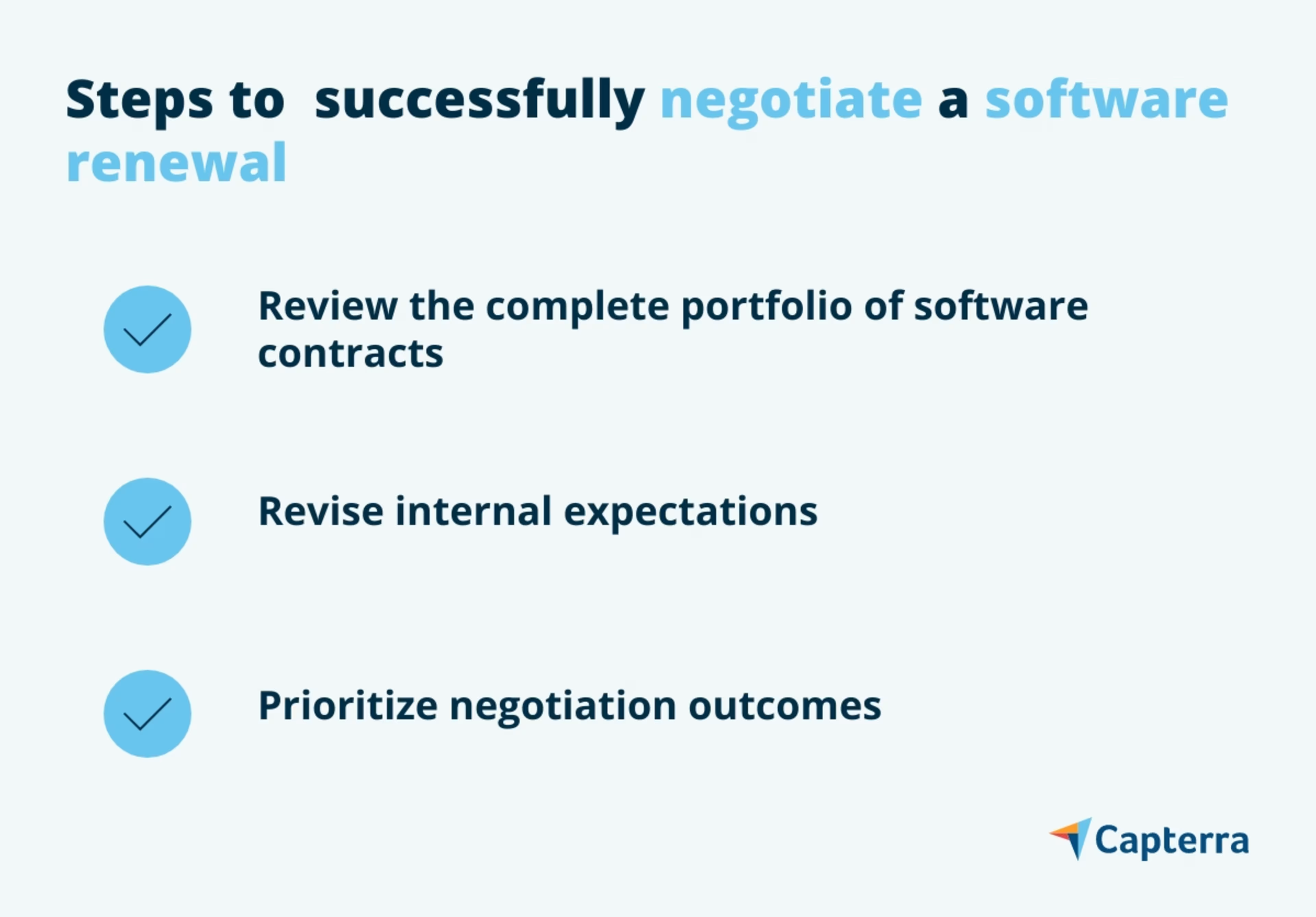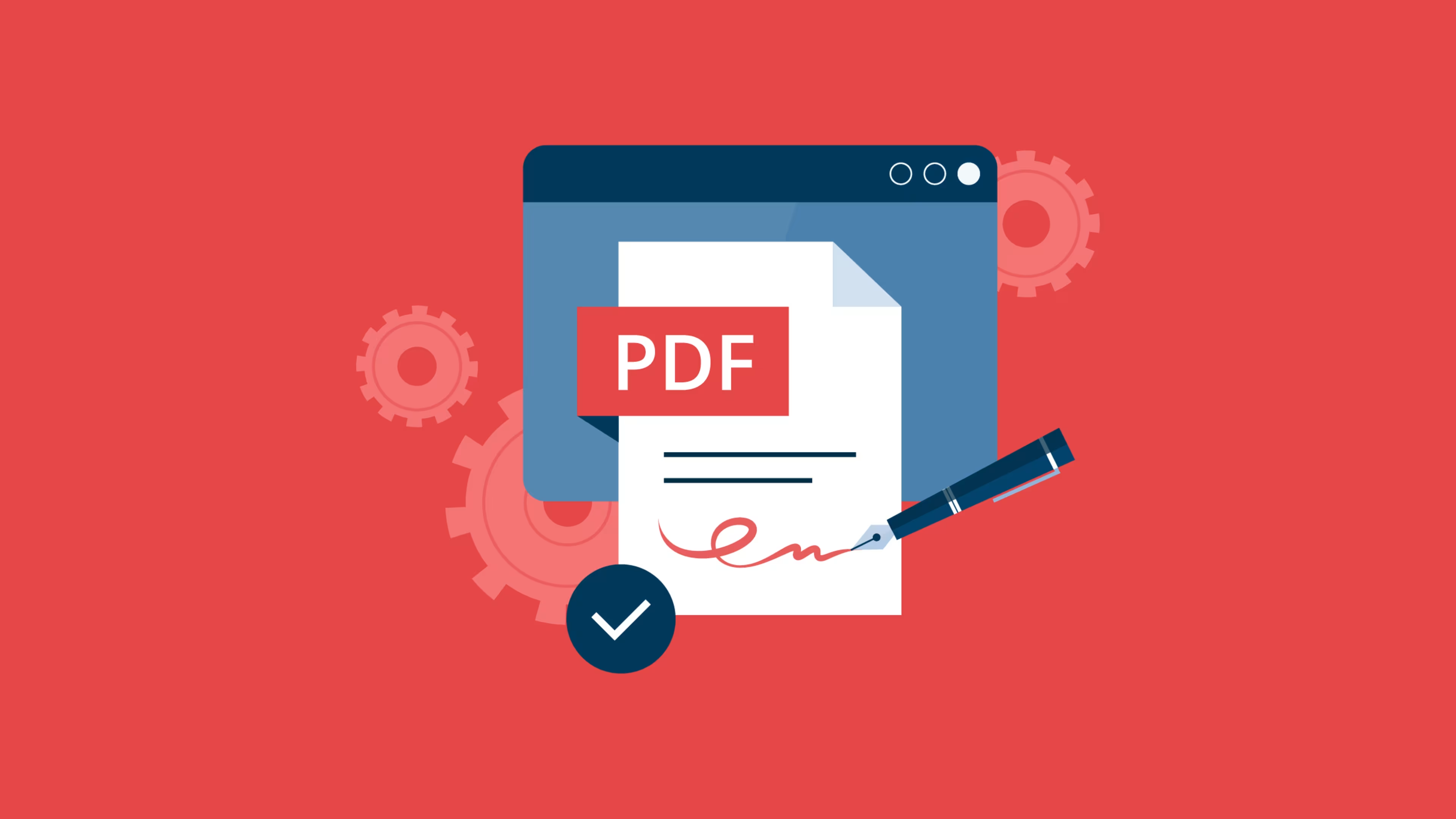Learn how to negotiate your software renewal contract effectively and save money.
In businesses of all sizes, sourcing, procurement, and vendor management (SPVM) leaders play an important role in orchestrating successful software contract renewals. As the expiration dates of these contracts approach, SPVM leaders run into some complex challenges: how to secure favorable terms, prevent disruptions in service, and ensure the organization's evolving needs are met.
When it comes to contract negotiations, time is of the essence, and the constraints are obvious. Resource limitations, combined with condensed timelines, have left many SPVM leaders struggling to achieve the results they desire. This pressure often leads to critical negotiation preparation steps being skipped, which can have serious consequences.
In this article, we'll look at strategies and steps that SPVM leaders can adopt to strengthen their software renewal planning so that the renewal process goes more smoothly. Our aim is to give these leaders the insights and tools necessary to prevent escalating costs, compliance risks, and less-than-optimal solutions.
What makes a software renewal negotiation successful?
In the software contract renewal process, success isn't defined by the fact that everyone has signed on the dotted lines of the new agreement. It encompasses the art of proactive planning, strategic decision-making, and careful negotiation that ensures the seamless continuation of business operations along with favorable terms. A successful software renewal negotiation safeguards an organization against a range of potential pitfalls, securing its future growth and stability in the process.
For small to midsize businesses (SMBs), the intricacies of contract negotiation can be even more daunting. Often, SMBs deal with limited resources and a busy operational landscape, which can make the whole process overwhelming, which makes a well-structured approach even more important, because cutting corners to save time or forgetting a step can lead to even bigger problems that won't be as easy to sidestep, including:
Unfulfilled business needs: Failing to understand and incorporate your organization's operation requirements can lead to critical functionality gaps, hindering day-to-day operations and obstructing progress.
Material licensing changes: Often, licenses can change from year to year. These changes might reduce the usage scope, change the number of users permitted to access the software, or impose new restrictions, disrupting your business's ability to use the tool effectively.
Loss of discounts: Often, renewal negotiations can be a chance to secure favorable pricing and discounts. A failure to secure discounts can result in inflated costs that strain your budget and obstruct financial efficiency.
Ambiguous or suboptimal terms: Failing to review and understand the terms and conditions of your contract can lead to a situation where your business unwittingly accepts terms that are detrimental to its objectives.
The roadmap set out in this article offers a solution to prevent these issues. It will help you transform the renewal negotiation process from a reactive scramble into a proactive strategy. The software renewal process is not something you want to rush to the finish line. The process outlined below can help you seize control of your organization's future, steer clear of pitfalls, and embrace an opportunity for growth.
How to successfully negotiate a software renewal
The process for efficient software renewal negotiation can be broken down into three steps: review, revise, and prioritize. Let's look at these steps in detail:

Review the complete portfolio of software contracts
In the complex realm of software contract renewals, success begins with a comprehensive understanding of your organization's contract portfolio. The important step, often overlooked, holds the key to strategic negotiation that aligns with your business goals and operational requirements.
SPVM leaders are no strangers to the expanding volume of renewals that demand attention, but it is important to realize that not all contracts require the same level of planning. A tiering approach can help you manage the complexity of software contracts and involves classifying contracts based on four main categories:
Scale of expenditure: Determine if the vendor falls within the top 80% of spend. This helps you prioritize contracts that significantly impact your budget.
Critical dependency: Consider the degree of impact a contract has on customer retention or service. Contracts that are tightly integrated need more consideration.
Risk: Assess the frequency of price increases and the complexity of contract terms and licensing. Contracts with noncompliance risks or frequent changes should be identified.
Complexity: Analyze the availability of alternative products, contracts, and vendor options. Contracts with complex licensing metrics or require detailed assessments fall into this category.
Using these categories as your guide, you can then classify your contracts into four tiers:
Tier 1: These contracts are the most important due to their high expenditure, critical dependency, substantial risk, and intricate complexity. They require meticulous planning, long-term strategy (12 to 24 months ahead), and a comprehensive assessment of alternatives and user requirements.
Tier 2: Contracts falling into this tier may not cost as much as Tier 1, but they possess critical dependencies and potential for growth. Renewal planning for Tier 2 contracts should span at least eight months, considering their impact on operations and potential cost increases.
Tier 3 and Tier 4: These tiers hold many contracts that may have lower spend, limited complexity, and reduced risk. While Tier 3 contracts should be assessed within six months for competitive alternatives and switching costs, Tier 4 contracts can use a shorter renewal planning timeline, often around 90 days.
Meticulously reviewing your complete portfolio of software contracts enables you to identify high-value contracts, align them with a long-term renewal roadmap, and prioritize negotiation efforts. Now, let's look at the next step.
Revise internal expectations
Renewal negotiations aren't confined to vendor interactions. To navigate the process successfully, it's important to align internal expectations and create a clear plan that ensures collaboration, insight, and a well-rounded perspective.
Timing is critical in the world of software renewals. Lower-tier vendor contracts with expirations of 90 days or less necessitate careful handling. The first step is to validate the contract timeline. Is it fixed, is there a grace period, or can an extension be pursued? Conversely, overlooking non-renewing lower-tier deals can result in service disruptions and loss of access. Beware of vendor tactics to send renewal proposals late, curbing negotiation time. Having alternative timelines in place and continuous preparation ensures you remain proactive and well-prepared.
Understanding the dynamics of renewal negotiations is crucial. Vendors are less inclined to offer similar discounts in renewal situations. To expect identical discounts without compelling reasons for increased investment or leverage elsewhere is unrealistic. Successful negotiations often involve identifying avenues for value enhancement beyond discounts, such as strategic partnerships or the inclusion of priority products.
It is also important to evaluate your existing contract. Analyze both the positive and negative aspects, forming a well-rounded understanding of the agreement's impact. Considerations range from payment terms and hidden costs to past performance issues and future licensing requirements. Use pain points as leverage and capitalize on positive elements. This step can optimize your current deal and safeguard against recurring negative issues.
Also, pay attention to product and licensing changes that might impact your renewal. Some vendors lock pricing and terms for the contract's duration, potentially resulting in multiple changes converging at renewal. Proactive awareness of these changes allows you to undertake mitigation measures. This could range from seeking transitional pricing for altered license metrics to effectively addressing any modifications that could lead to substantial price increases.
Prioritize negotiation outcomes
To emerge from the negotiation process not only unscathed but empowered, it's imperative to prioritize the terms that matter most to your organization. Begin by identifying your must-have terms, which are those non-negotiable elements that hold the potential to transform your renewal agreement into a strategic asset. These terms can be broken up into four categories:
Flexibility
Payment terms
Commercial terms
Contingency plans
As the negotiation climate evolves due to economic shifts, flexible terms are increasingly valuable. Balancing flexibility with your organization's unique context and requirements is paramount. Evaluate terms that are required versus those that are important or not applicable. This evaluation helps prioritize negotiations and keeps track of negotiation statuses.
Align your needs with vendor priorities for effective negotiation. Mature Software Asset Management (SAM) processes grant access to deployment data. Compare it with contract entitlements for baseline. Check if future tech needs match vendor priorities. Evaluate product utilization and weigh it against other options that either optimize costs or enhance leverage. Overlooking functional needs during the renewal process can lead to premium costs, which underscores the significance of addressing these before the agreement is finalized.
Uncertainty about your organization's future technology requires strategic navigation. Negotiating the rates for add-on modules during renewal empowers you to secure these capabilities for the term ahead. However, if your roadmap remains uncertain and overcommitment is a concern, consider these strategies:
Investigate license reduction options in the contract for specific products. This flexibility allows adjustments to user requirements mid-contract.
Undercommit to lower-level modules while adding small quantities of higher-level modules. This locks in pricing for the new contract term, removing the need to negotiate new products with diminished leverage.
Significant growth in user quantities requires a strategic approach. Ensure that discounts extended are also applicable to net new license additions. If the unit price decreases with additional licenses, have a future pricing table that clearly outlines when these incentives and discounts come into play.
As leverage guides your negotiation, consider no price protection as a potential deal breaks when the vendor promotes a product that isn't immediately required. Price protection and license reduction conditions can sometimes conflict. These strategic maneuvers enable you to craft a negotiation strategy that not only aligns with your organization's needs but also safeguards its interests and future growth.
Next steps
In the realm of software contract renewals, the challenges of resource constraints, compressed timelines, and complex terms are all too familiar. As a sourcing, procurement, and vendor management (SPVM) leader, your role in ensuring successful contract negotiations is pivotal and affects your organization's operational efficiency and financial future.
While the business need for successful negotiations is clear, that doesn't make the process any easier for SPVM leaders. They have to avoid unfulfilled business needs, unnecessary material licensing changes, loss of discounts, and accepting unfamiliar terms, but do so in a timely manner and with limited resources.
Your next steps for improving your organization's software negotiation process is taking the insights from this article and aligning them with your organization's unique context and objectives. Start by assessing your contract portfolio, categorizing each contract, and determining the negotiation timeline that fits each. Then, collaborate internally, engage with vendor specialists, and seek unbiased third-party advice to inform your strategy.
For more information to help you negotiate software contracts, check out these resources:

